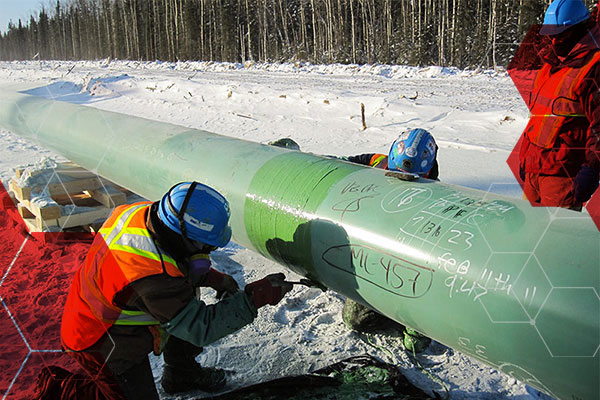Pipeline systems are vital for the transportation of resources such as oil, gas, and water across vast distances. Over time, these pipelines are subjected to harsh environmental conditions, leading to corrosion, leaks, and structural damage. To ensure the longevity and efficiency of pipeline infrastructure, coatings are applied to protect against these challenges. Among the various coating techniques available, polyurea coatings have gained popularity due to their exceptional durability and versatility. In this blog post, we will delve into the benefits of using polyurea coatings for pipeline protection.
Understanding Pipeline Coating Techniques
Pipeline coating techniques involve applying protective materials on the external and internal surfaces of pipelines to mitigate the effects of corrosion, abrasion, and other forms of deterioration. The primary goal of these coatings is to create a barrier between the metal substrate and the surrounding environment, prolonging the life of the pipeline.
Polyurea Coatings: The Versatile Solution
Polyurea coatings have gained recognition within the industry for their outstanding properties and versatility. Formed through the reaction of an isocyanate and a synthetic resin blend, polyurea coatings provide a seamless, durable, and flexible protective layer. Let’s explore the benefits that make polyurea coatings an ideal choice for pipeline protection:
1. Excellent Durability: Polyurea coatings exhibit exceptional durability and resistance to abrasion, impact, and chemical exposure. This makes them highly suitable for pipelines that face challenging environmental conditions, including high temperatures, extreme weather fluctuations, and abrasive materials. The robust nature of polyurea coatings ensures that pipelines remain protected for extended periods, reducing maintenance requirements and associated costs.
2. Rapid Cure Time: One of the significant advantages of polyurea coatings is their rapid cure time. Upon application, polyurea coatings cure and harden within seconds, allowing for faster project completion. This is especially beneficial when dealing with critical infrastructure where minimizing downtime is essential. The quick cure time also enables multiple coats to be applied in a single day, enhancing productivity and efficiency.
3. Seamless and Flexible: Polyurea coatings create a seamless protective layer that adheres tightly to the substrate, even on irregular surfaces. This seamless nature prevents the formation of gaps or weak spots where corrosion or leaks could occur. Additionally, polyurea coatings possess high flexibility, allowing them to expand and contract with the pipeline’s movements without cracking or peeling. This flexibility is crucial in regions with seismic activities or pipelines subjected to temperature fluctuations.
4. Excellent Chemical Resistance: Pipeline systems often transport corrosive materials or come into contact with chemicals during maintenance procedures. Polyurea coatings excel in providing protection against chemical exposure, maintaining pipeline integrity even when exposed to harsh substances. The resistance of polyurea coatings to a wide range of chemicals makes them an ideal choice for various pipeline applications.
5. Adhesion to Various Substrates: Polyurea coatings exhibit excellent adhesion to various substrates, including metal, concrete, and fiberglass. This versatility allows them to be utilized for different types of pipelines, irrespective of the material composition. The ability to adhere to different substrates ensures a reliable and consistent protective barrier.
6. Minimal Environmental Impact: Polyurea coatings are known for their environmentally friendly nature. They are solvent-free and do not contain any volatile organic compounds (VOCs), making them a sustainable choice for pipeline protection. The reduced environmental impact of polyurea coatings aligns with the growing emphasis on sustainability and reduces the overall carbon footprint of pipeline rehabilitation projects.
Conclusion
Pipeline coating techniques play a crucial role in maintaining the integrity and longevity of vital infrastructure. Among the various coating options available, polyurea coatings stand out for their exceptional durability, rapid cure time, seamless application, flexibility, chemical resistance, and adhesion to diverse substrates. These properties make polyurea coatings an ideal choice for protecting pipelines against corrosion, leaks, and other forms of deterioration. As the demand for reliable and efficient pipelines continues to rise, incorporating polyurea coatings in pipeline rehabilitation projects is a sustainable step towards ensuring the longevity and functionality of critical infrastructure.
Pipeline Coating Techniques: Exploring the Benefits of Polyurea Coatings


3 comments